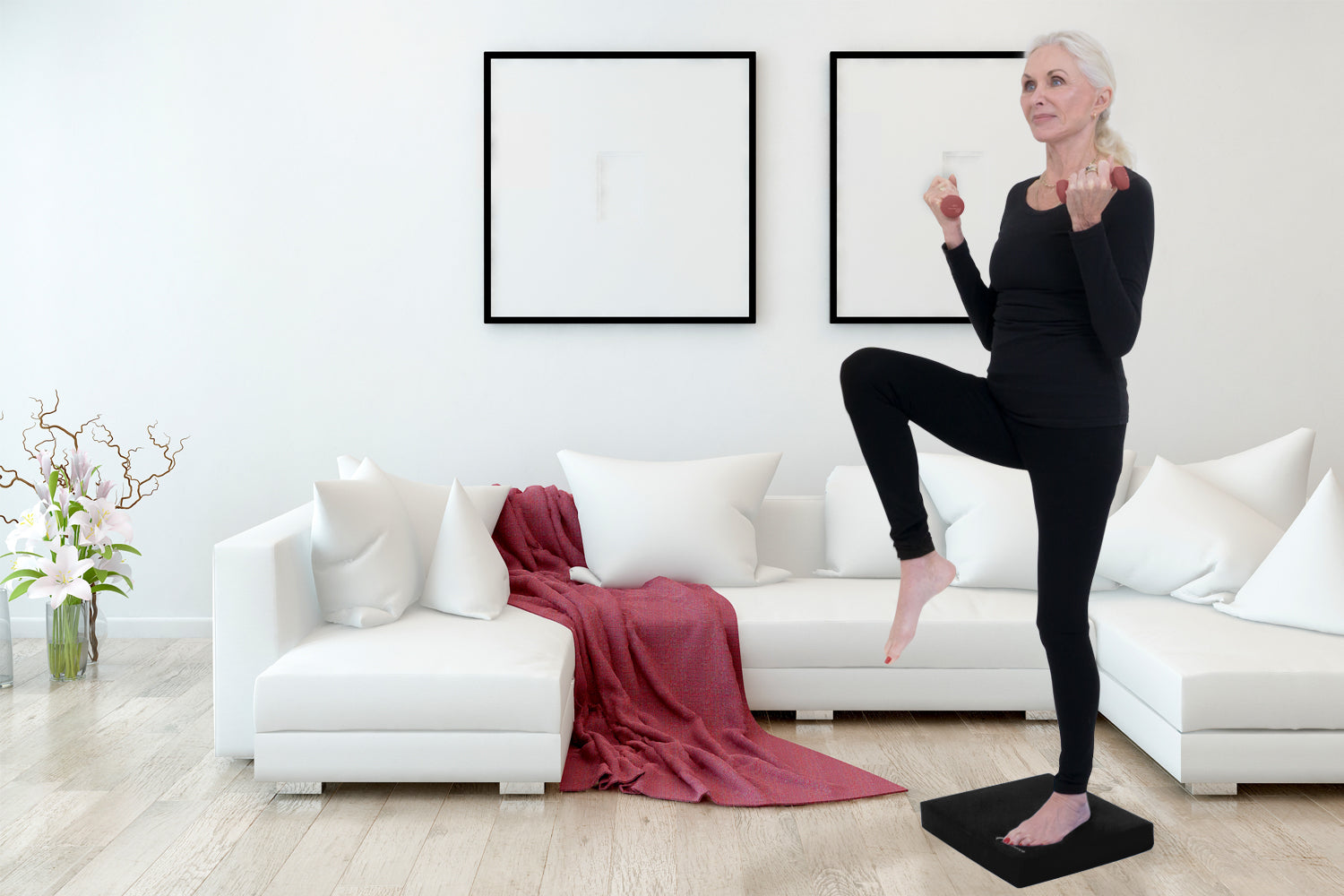Why Do Balance Exercises?
We can all agree that the fear of falling and injury, or depending on others for stability, is not a fun way to live. As we age, balance becomes much more challenging, which is why it also becomes more important to maintain. One bad fall due to lack of balance can be detrimental.
A study from the British Medical Journal points out that even minor injuries from falls, “May have serious consequences, such as diminished self-confidence, social isolation, and restriction on activity, which in turn will accelerate functional decline and increase the risk of placement in a nursing home.”
The good news is that, as with most skills, practice makes perfect. By consistently working on balance, you can increase core strength, stability and mobility. These will help protect you, improve your ability to remain independent, and enable you to enjoy each day more fully!
That same study from BMJ concluded that exercise programs designed for fall prevention (which may include things like balance, strength, tai chi, flexibility) do in fact prevent falls in older adults and “Also seem to prevent injuries caused by falls, including the most severe ones. Such programs also reduce the rate of falls leading to medical care.”
While it may not always sound like fun, spending time working on balance exercises can reap many rewards that will pay off in the long run with a happier, more comfortable life.
Balance Exercises for Seniors
These balance pad exercises are a great place to start by performing them daily. You can easily do these in the comfort of home, or meet up with a friend and try them together for some social time and accountability.
Work your way down the list, or just choose two or three for the day. This list of exercises goes in order from easiest to most difficult. If any of these are too easy for you, just skip ahead on the list, or try holding light dumbbells in your hands while performing them.
Keep in mind that when you do these exercises, you should always position yourself near a sturdy object counter, railing, or doorway you can hold on to if needed and help catch yourself if you lose balance. Also, keep your core tight and head up to keep you balanced. Think of pulling your belly button back toward your spine for proper core engagement.
7 Balance Pad Exercises
-
Side-to-Side Steps
- Start standing on the balance pad with feet close together.
- Shift your weight entirely onto your right foot and slowly lift your left leg off the pad. Hold for 3-4 seconds, then put your left down.
- As soon as the left leg touches the pad, transfer your weight to that foot and lift your right leg.
- Repeat 5-10 times on each side.

-
Toe Raises
- Start standing on the balance pad with feet close together.
- Slowly lift up onto your toes as high as you can, then lower back down to the start.
- Repeat 10-15 times.

-
March in Place
- Start standing on the balance pad with feet close together.
- Start marching, lifting one foot at a time as high as you comfortably can. Try moving your arms at the same time for momentum and balance, keeping them bent by your sides at 90-degree angles.
- Repeat for 30-60 seconds.

-
Step-Ups
- Stand on the floor with the balance pad on the floor in front of you.
- Carefully step onto the pad, then bring the other foot up to meet it.
- Hold this position for 1-2 seconds, maintaining balance, then step back down and repeat as many times as desired.

-
Single Leg Balance
- Start standing on the balance pad with feet close together.
- Extend arms out to the side for balance, then slowly lift one leg, bending at the knee. Try to raise it so your knee comes to hip level, parallel to the floor, or as high as you can.
- Hold as long as you can (up to 20 seconds), then return leg to the pad.
- Switch and repeat on the other leg. Repeat 5-10 times on each side.
- If this becomes too easy, try adding in some light dumbbells and performing bicep curls or shoulder raises while standing on one leg.

-
Squats
- Start standing on the balance pad with feet approximately hip distance apart.
- Extend arms straight out in front of you, then slowly bend your knees and push your hips and buttocks back toward the wall behind you.
- Lower as far as you comfortably can, then return to the start position.
- Repeat 15-20 times.

-
Plank
- Place balance pad on the floor, ideally on a cushioned exercise mat or carpet. Note: If you have trouble getting up and down from the floor, make sure the pad is near a counter, chair, or railing for assistance.
- Carefully lower yourself down to the floor into a kneeling position with the pad in front of you.
- Place bent arms onto the pad so that only your forearms and elbows touch, and elbows are aligned underneath shoulders. Extend legs back behind you and lift up onto your toes. If this is too difficult, you can remain in your knees.
- Make sure your body is in a straight line from shoulders to toes, not letting your hips lift up into the air or sink down toward the floor.
- Keep your belly button pulled in toward your spine and hold this position for 20-60 seconds, or as long as you can.








